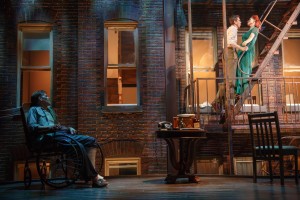
Crime and the theater have always had a mutually beneficial relationship. As an extremity of human behavior, crime is dramatic. We see this in plays that we might not immediately think of as mysteries. Oedipus Rex, of course, and Medea, which could be viewed as an ancient Cornell Woolrich revenge story—The Bride Wore Poison. O’Neill’s Mourning Becomes Electra is, among other things, a rip-roaring murder melodrama. And Pinter’s The Birthday Party is a version of The Killers—a man with a past tries to hide from it, but can’t. . . . Neither of these plays are exactly mysteries, but they demonstrate that both O’Neill and Pinter knew their sensational literature.
There are certainly fewer mystery plays being written these days—or at least being produced—than in the Golden Age. The situation can be compared, I think, to that of the pulp magazine when radio and television essentially took the pulps’ audience away by providing short-form mysteries you could listen to or watch. But they’re still being written and produced—though the home of the mystery play is no longer on Broadway. It thrives in regional and community theater. Audiences love a good mystery, whether it’s one of the seemingly inexhaustible supply of plays about Sherlock Holmes, or a new adaptation of a classic mystery novel, or an original taking place in New York City. In a good mystery play there’s always a moment when the entire audience leans forward—they want to know—they have to know—what’s going to happen next. It’s one of the prime experiences an audience can have.
What Mark Twain once said about himself can be applied to the mystery play: the reports of its death have been greatly exaggerated. A stage version of Stephen King’s Misery opens later this month, and King’s been working on a musical, of all things, with John Mellencamp. An adaptation of Rear Window (with Kevin Bacon) is currently playing at the Hartford Stage in Connecticut. A new play, Cut the Butcher, just closed after a run at the Cherry Lane Theatre, a respected off-Broadway venue. Walter Mosley’s Lift was performed last year at 59 E. 59 in Manhattan. Recently, A Gentleman’s Guide to Love and Murder and Murder for Two mixed music and mayhem to great effect.
New and old works in the genre abound. The mystery play, in all its variations, is far from dead—which makes its current status (or non-status) in regards to Mystery Writers of America a sad and troublesome thing. The Edgar Award for Best Play has been on hiatus for the last four years; “not enough entries” is the official stance. This is debatable. There will always be more entries for, say, Best First Novel than for Best Play. The journey to the stage is often a long and twisted road; the economics of the theater are not those of the publishing industry. Rather than let the Best Play Edgar fall to the wayside, I suggest that theaters across the company be alerted to the existence of the category. I believe the response would surprise MWA and definitively prove the health of the mystery play. Alternately, the Best Play category could be grouped with that of the Special Edgar, and used to note the appearance of a particularly meritorious piece of theater. What it should not be is—abandoned. The theater has been a home to such stalwarts of the mystery world as Dame Agatha Christie, Anthony Shaffer, and Rupert Holmes. It continues to attract authors such as Mosley and King. The mystery play’s heritage is a long and honorable one, and deserves its place in the sun…or, should I say, in front of the footlights.
—Joseph Goodrich
Joseph Goodrich is an Edgar Award-winning playwright and the editor of Blood Relations: The Selected Letters of Ellery Queen, 1947-1950.

Great article. And I absolutely agree!
Nina—
Thanks so much for your comment! I appreciate it!